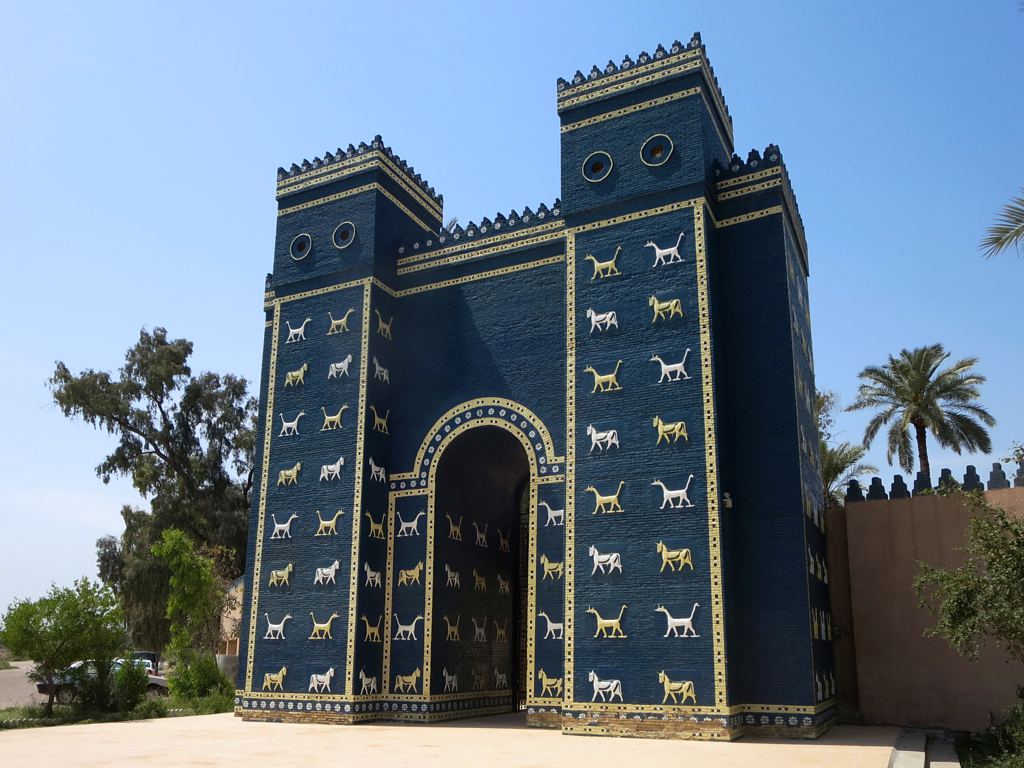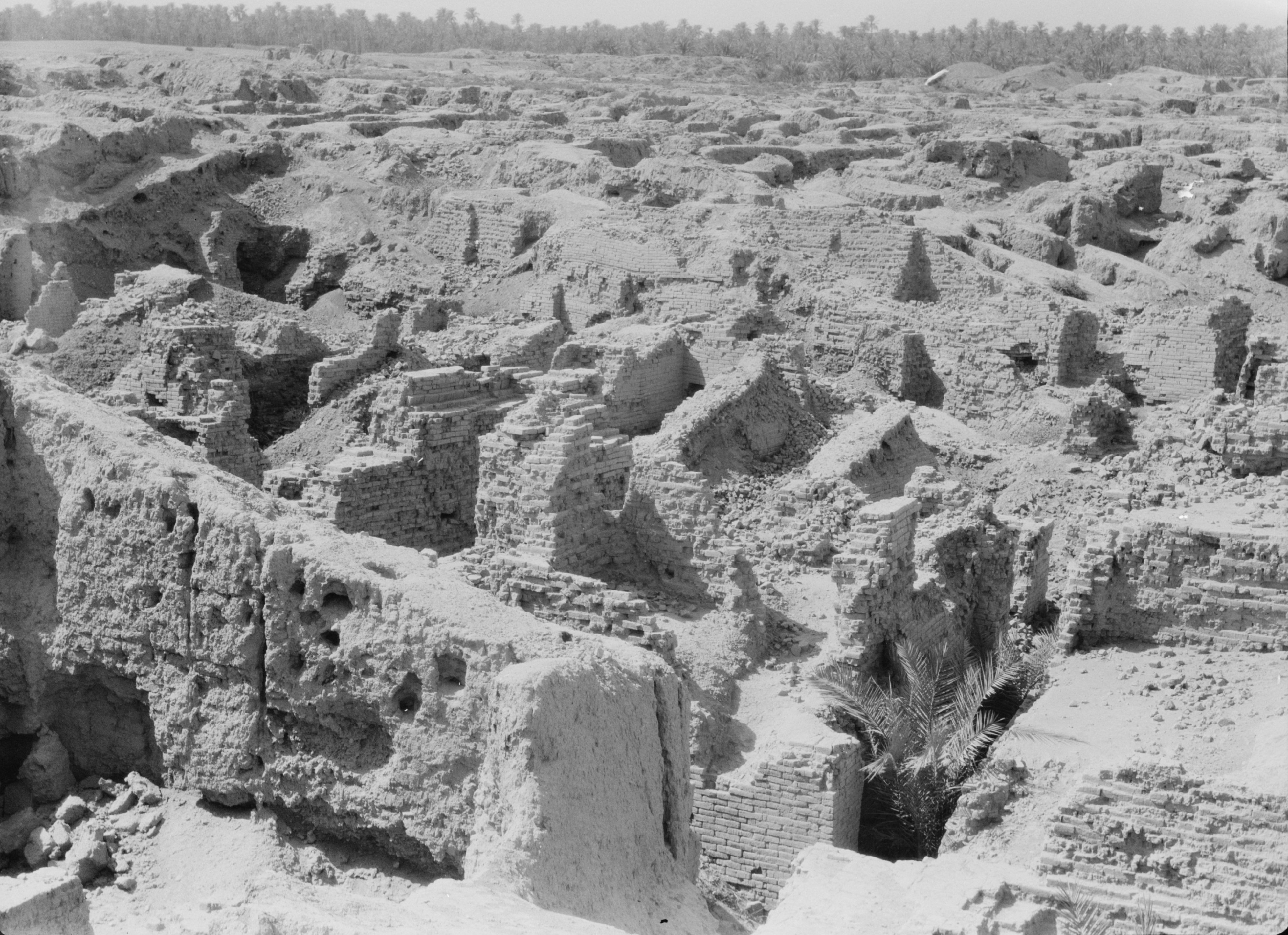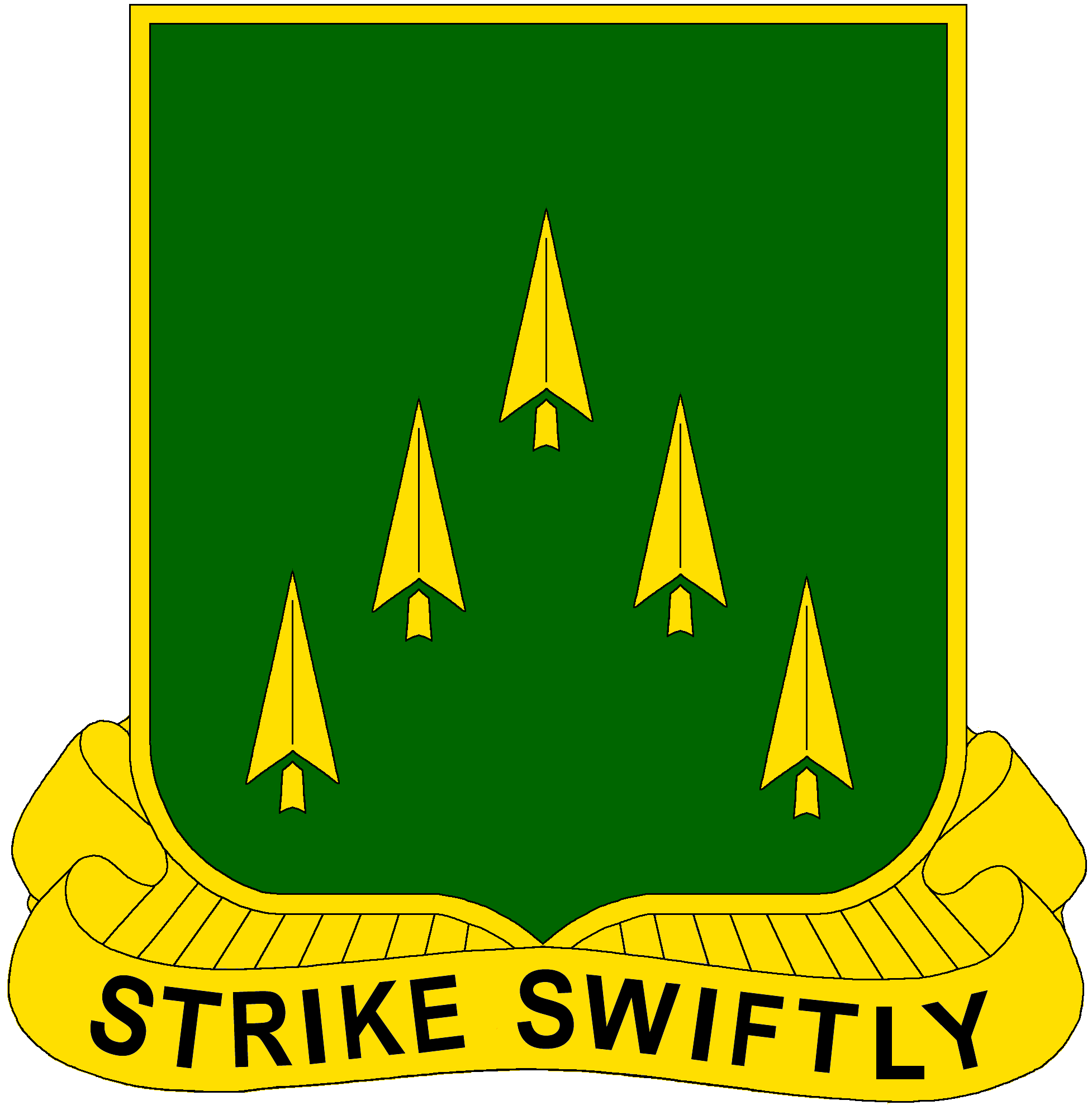|
Hilla
Hillah ( ar, ٱلْحِلَّة ''al-Ḥillah''), also spelled Hilla, is a city in central Iraq on the Hilla branch of the Euphrates River, south of Baghdad. The population is estimated at 364,700 in 1998. It is the capital of Babylon Province and is located adjacent to the ancient city of Babylon, and close to the ancient cities of Borsippa and Kish. It is situated in a predominantly agricultural region which is extensively irrigated with water provided by the Hilla canal, producing a wide range of crops, fruit and textiles. Its name may be derived from the word "beauty" in Arabic. The river runs exactly in the middle of the town, and it is surrounded by date palm trees and other forms of arid vegetation, reducing the harmful effects of dust and desert wind. The city was once a major center of Islamic scholarship and education. The tomb of the Jewish prophet Ezekiel is reputed to be located in a nearby village, Al Kifl. It became a major administrative centre during the rul ... [...More Info...] [...Related Items...] OR: [Wikipedia] [Google] [Baidu] |
Hindiya Barrage
The Hindiya Barrage is a barrage on the Euphrates south of the town of Musayyib in Babil Governorate of Iraq. Located north of the Al-Hindiya District, it was designed by British civil engineer William Willcocks in response to the silting up of the Hillah branch of the Euphrates. Construction of the dam, with a length of over , lasted between 1911 and 1913. Between 1984 and 1989, a new dam was built several kilometres upstream as a replacement for the Hindiya Barrage. Background and planning Until 1875, the Euphrates split into two channels south of the town of Musayyib; the western Hindiya branch and the eastern Hillah branch. Due to changes in the water management of the wider Tigris–Euphrates river system in 1875, severe floodings of the Euphrates downstream from Fallujah occurred. As a result of these floodings, discharge into the lower Hindiya branch increased and the Hillah branch started to silt up. In 1909, discharge into the Hillah branch had been reduced to per seco ... [...More Info...] [...Related Items...] OR: [Wikipedia] [Google] [Baidu] |
Babylon Province
Babil Governorate or Babylon Province ( ar, محافظة بابل ''Muḥāfaẓa Bābil'') is a governorate in central Iraq. It has an area of , with an estimated population of 2,065,042 people in 2018. The provincial capital is the city of Hillah, which lies opposite the ancient city of Babylon (بابل), on the Euphrates river. History The ancient city of Babylon in present-day Babylon Province was the capital of ancient Babylonia, situated on the Euphrates river south of Baghdad, Iraq. The city was occupied from the 3rd millennium BC but became important early in the 2nd millennium under the kings of the First Dynasty of Babylon. The sixth king of this dynasty was Hammurabi (1792–1750 BC) who made Babylon the capital of a vast empire and is best remembered for his code of laws. The city peaked in pre-eminence when Nabopolassar (626–605 BC) and his successor and son Nebuchadnezzar II (605–562 BC) extended the Neo-Babylonian Empire over most of Western Asia. Bestowin ... [...More Info...] [...Related Items...] OR: [Wikipedia] [Google] [Baidu] |
Babylon
''Bābili(m)'' * sux, 𒆍𒀭𒊏𒆠 * arc, 𐡁𐡁𐡋 ''Bāḇel'' * syc, ܒܒܠ ''Bāḇel'' * grc-gre, Βαβυλών ''Babylṓn'' * he, בָּבֶל ''Bāvel'' * peo, 𐎲𐎠𐎲𐎡𐎽𐎢 ''Bābiru'' * elx, 𒀸𒁀𒉿𒇷 ''Babili'' *Kassite: ''Karanduniash'', ''Karduniash'' , image = Street in Babylon.jpg , image_size=250px , alt = A partial view of the ruins of Babylon , caption = A partial view of the ruins of Babylon , map_type = Near East#West Asia#Iraq , relief = yes , map_alt = Babylon lies in the center of Iraq , coordinates = , location = Hillah, Babil Governorate, Iraq , region = Mesopotamia , type = Settlement , part_of = Babylonia , length = , width = , area = , height = , builder = , material = , built = , abandoned = , epochs = , cultures = Sumerian, Akkadian, Amorite, Kassite, Assyrian, Chaldean, Achaemenid, Hellenistic, Parthian, Sasanian, Muslim , dependency_of = , occupants = , event = , excavations = , archaeologists = Hormuzd Rassam, Ro ... [...More Info...] [...Related Items...] OR: [Wikipedia] [Google] [Baidu] |
Babylon Ruins Marines
''Bābili(m)'' * sux, 𒆍𒀭𒊏𒆠 * arc, 𐡁𐡁𐡋 ''Bāḇel'' * syc, ܒܒܠ ''Bāḇel'' * grc-gre, Βαβυλών ''Babylṓn'' * he, בָּבֶל ''Bāvel'' * peo, 𐎲𐎠𐎲𐎡𐎽𐎢 ''Bābiru'' * elx, 𒀸𒁀𒉿𒇷 ''Babili'' *Kassite: ''Karanduniash'', ''Karduniash'' , image = Street in Babylon.jpg , image_size=250px , alt = A partial view of the ruins of Babylon , caption = A partial view of the ruins of Babylon , map_type = Near East#West Asia#Iraq , relief = yes , map_alt = Babylon lies in the center of Iraq , coordinates = , location = Hillah, Babil Governorate, Iraq , region = Mesopotamia , type = Settlement , part_of = Babylonia , length = , width = , area = , height = , builder = , material = , built = , abandoned = , epochs = , cultures = Sumerian, Akkadian, Amorite, Kassite, Assyrian, Chaldean, Achaemenid, Hellenistic, Parthian, Sasanian, Muslim , dependency_of = , occupants = , event = , excavations = , archaeologists = Hormuzd Rassam, Ro ... [...More Info...] [...Related Items...] OR: [Wikipedia] [Google] [Baidu] |
Al Kifl
Al Kifl ( ar, الكفل; also known as Kifl) is a town in southeastern Iraq on the Euphrates River, between Najaf and Al Hillah. The population in and near the town is about 15,000. Kifl is the location of Al-Nukhailah Mosque, containing the tomb of Dhul-Kifl who is believed be the biblical prophet Ezekiel. A project to renovate the tomb and develop it as a tourist attraction has proven controversial."Crossroads of Antiquity Can’t Decide on New Path" article by Steven Lee Myers in '''' October 19, 2010, October 20, 2010 The town was once a significant Jewish pilgrimage site and home to a community of |
Iraqi Revolt Of 1920
The Iraqi revolt against the British, also known as the 1920 Iraqi Revolt or the Great Iraqi Revolution, started in Baghdad in the summer of 1920 with mass demonstrations by Iraqis, including protests by embittered officers from the old Ottoman Army, against the British who published the new land ownership and the burial taxes at Najaf. The revolt gained momentum when it spread to the largely tribal Shia regions of the middle and lower Euphrates. Sheikh Mehdi Al-Khalissi was a prominent Shia leader of the revolt. Using heavy artillery and aerial bombardment, the uprising was suppressed by the British. Sunni and Shia religious communities cooperated during the revolution as well as tribal communities, the urban masses, and many Iraqi officers in Syria.Atiyyah, Ghassan R. ''Iraq: 1908–1921, A Socio-Political Study''. The Arab Institute for Research and Publishing, 1973, 307 The objectives of the revolution were independence from British rule and the creation of an Arab government ... [...More Info...] [...Related Items...] OR: [Wikipedia] [Google] [Baidu] |
70th Armor Regiment
The 70th Armor Regiment is an armored (tank) unit of the United States Army. It was constituted as the 70th Tank Battalion in July 1940, an independent tank battalion intended to provide close support to infantry units. In this role, it saw action in the Mediterranean and European Theater of Operations, making assault landings and fighting with the 9th Infantry Division in North Africa, and with the 1st Infantry Division in Sicily. The battalion supported the 4th Infantry Division on Utah Beach during the D-Day landings in France, and fought with the 4th Infantry Division through the remainder of World War II. The 70th Tank Battalion was one of the first three tank battalions to deploy to Korea in the Korean War, where it saw significant action, primarily with the 1st Cavalry Division. The 70th Armor Regiment was designated a parent organization as part of the Combat Arms Regimental System (CARS) in 1963. When CARS was replaced by the U.S. Army Regimental System (USARS) sy ... [...More Info...] [...Related Items...] OR: [Wikipedia] [Google] [Baidu] |
Manchester Regiment
The Manchester Regiment was a line infantry regiment of the British Army in existence from 1881 until 1958. The regiment was created during the 1881 Childers Reforms by the amalgamation of the 63rd (West Suffolk) Regiment of Foot and the 96th Regiment of Foot as the 1st and 2nd battalions; the 6th Royal Lancashire Militia became the 3rd (Reserve) and 4th (Extra Reserve) battalions and the Volunteer battalions became the 5th, 6th, 7th, 8th, 9th and 10th battalions. After distinguished service in both the First and the Second World Wars, the Manchester Regiment was amalgamated with the King's Regiment (Liverpool) in 1958, to form the King's Regiment (Manchester and Liverpool), which was, in 2006, amalgamated with the King's Own Royal Border Regiment and the Queen's Lancashire Regiment to form the present Duke of Lancaster's Regiment (King's, Lancashire and Border). 1881–1899 Between the 1860s and 1880s, the British Army underwent a period of reform implemented by Edwar ... [...More Info...] [...Related Items...] OR: [Wikipedia] [Google] [Baidu] |
Ezekiel
Ezekiel (; he, יְחֶזְקֵאל ''Yəḥezqēʾl'' ; in the Septuagint written in grc-koi, Ἰεζεκιήλ ) is the central protagonist of the Book of Ezekiel in the Hebrew Bible. In Judaism, Christianity, and Islam, Ezekiel is acknowledged as a Hebrew prophet. In Judaism and Christianity, he is also viewed as the 6th-century BCE author of the Book of Ezekiel, which reveals prophecies regarding the destruction of Jerusalem, and the restoration to the land of Israel. The name Ezekiel means "God is strong" or "God strengthens". In the Bible The author of the Book of Ezekiel presents himself as Ezekiel, the son of Buzi, born into a priestly ( kohen) lineage. Apart from identifying himself, the author gives a date for the first divine encounter which he presents: "in the thirtieth year". Ezekiel describes his calling to be a prophet by going into great detail about his encounter with God and four "living creatures" with four wheels that stayed beside the creature ... [...More Info...] [...Related Items...] OR: [Wikipedia] [Google] [Baidu] |
372nd Military Police Company (United States)
The 372nd Military Police Company is a law enforcement unit within the U.S. Army Reserve. The unit is based out of Cresaptown, Maryland. Eleven former members of this unit were charged and found guilty in the Abu Ghraib scandal. Another member of the company, Joseph Darby, was awarded the John F. Kennedy Profile in Courage Award for exposing the abuse at the prison. The 372nd MP Company is credited with the securing and stabilization of the city of Hillah (Babylon), alongside of the 1st Marines (MEF). The unit was responsible for guarding main supply routes (MSRs). Unit history The 372nd Military Police Company was originally activated on 15 October 1942 in Florence, Arizona under the authority of the Ninth Service Command. The unit was given orders in mid-July 1943 to report to Camp Shanks, near Orangeburg, New York for shipment to Italy in support of the Naples-Foggia Campaign. The unit also supported the Fifth Army in the Rome-Arno Campaign that began on 22 January 1944 ... [...More Info...] [...Related Items...] OR: [Wikipedia] [Google] [Baidu] |
Polish Zone In Iraq
The Polish zone in Iraq ( Polish: ''Polska strefa w Iraku''), designated as the South Central, South Center, Central South, Center South Zone or Sector ( Polish: ''Strefa środkowo-południowa''), was the area of responsibility for Multinational Division Central-South under Polish command, during the Occupation of Iraq. It was created in 2003 when Iraq was divided into four zones. The occupation ended on 31 December 2008.Grzegorz Jasiński (editor): ''Polski Kontyngent Wojskowy w Iraku 2003-2008'', in: ''Kronika Wojska Polskiego''. Warsaw: Fundacja Polonia Militaris, 2011. ISSN 1734-2317. The South Central Zone covered the Al-Qādisiyyah, Karbala, Babil and the Wasit Governorates. The region had a population of about 5 million spread over 65,632 km2. The Najaf Governorate was passed back to American control in 2004, due to reduction in strength of the forces under Polish command; this reduced the zone to about 3 million of population spread over 28,655 km2. Major citi ... [...More Info...] [...Related Items...] OR: [Wikipedia] [Google] [Baidu] |
Baghdad
Baghdad (; ar, بَغْدَاد , ) is the capital of Iraq and the second-largest city in the Arab world after Cairo. It is located on the Tigris near the ruins of the ancient city of Babylon and the Sassanid Persian capital of Ctesiphon. In 762 CE, Baghdad was chosen as the capital of the Abbasid Caliphate, and became its most notable major development project. Within a short time, the city evolved into a significant cultural, commercial, and intellectual center of the Muslim world. This, in addition to housing several key academic institutions, including the House of Wisdom, as well as a multiethnic and multi-religious environment, garnered it a worldwide reputation as the "Center of Learning". Baghdad was the largest city in the world for much of the Abbasid era during the Islamic Golden Age, peaking at a population of more than a million. The city was largely destroyed at the hands of the Mongol Empire in 1258, resulting in a decline that would linger through many ce ... [...More Info...] [...Related Items...] OR: [Wikipedia] [Google] [Baidu] |








